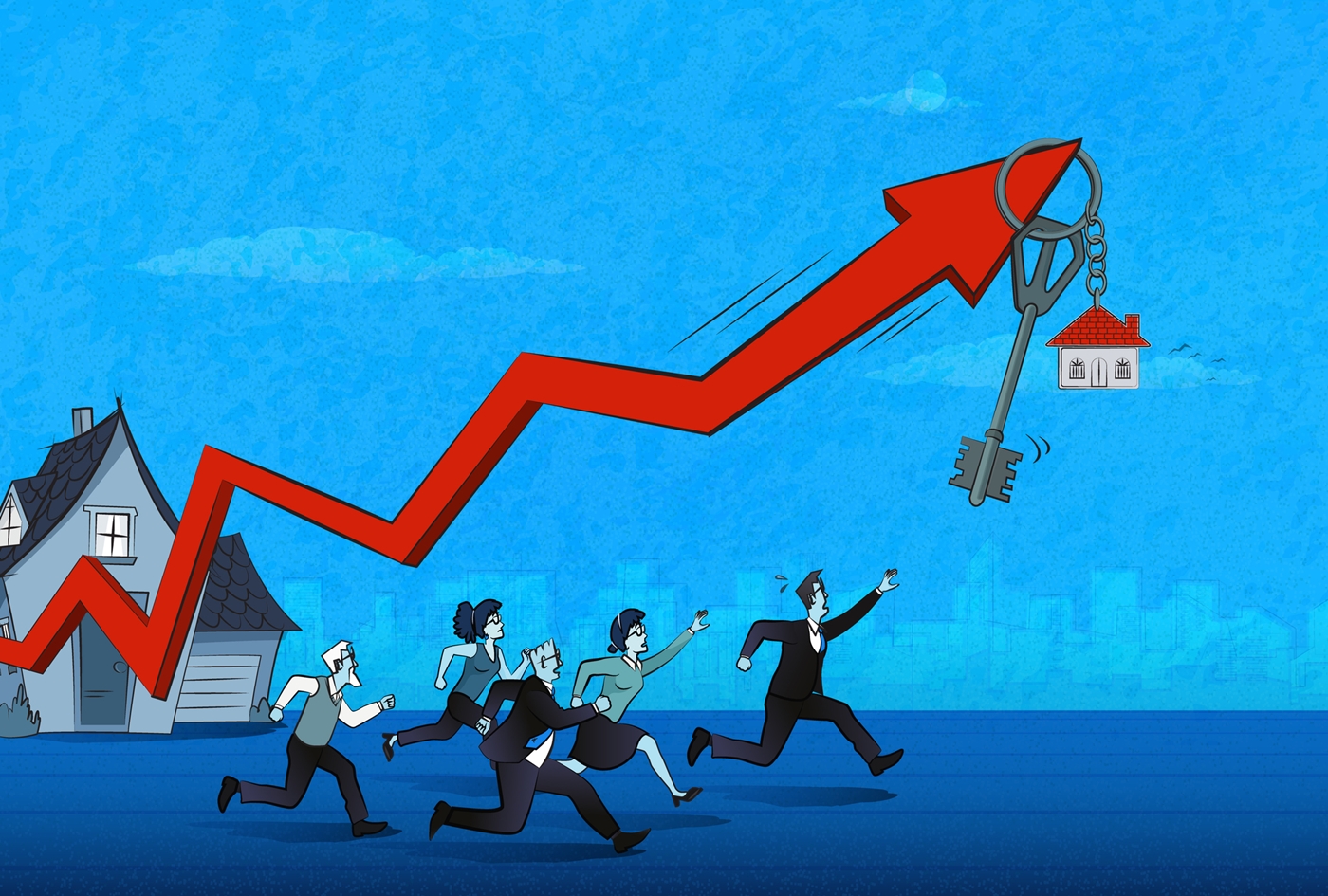The Canadian mortgage market has been ravaged by yet another wave of rate increases.
Most of the major banks have increased their mortgage rates after the recent rise in the yields on Government of Canada bonds, used for pricing fixed-rate loans.
Several large banks including BMO, CIBC, and RBC have increased their rates posted by between 15 and 40 basis points in the last week. (A basis point equals 1/100th or 0.01% of a percent).

According to data from MortgageLogic.news. The average discount rate for 1-year mortgages is now 6.25%, up from 5.99% one week earlier. The average 2-year rate for the major banks has also increased by the same percentage, now averaging about 6.40%.
Ron Butler, of Butler Mortgage, points out that the bond yields have now risen by more than 100 basis points or one full percentage point from their lows in March.
Rates with 4-handles, i.e. those within the range of 4%, have largely vanished in recent weeks. The latest rate increases have pushed many fixed-rate mortgages into the 6% to 7% range.
Butler, when asked if the 5-handle rate could soon dry up, said that 1-year and 2-year rates will be in the range of 6%, and 3-year and 5-year rates are expected to remain in the range of 5% “for now.”
He says that customers continue to show interest in two- and threeyear contracts.
Next week, will rates increase?
Butler believes that lenders and brokers will raise rates by up to 30 basis points next week due to the increase in bond yields.
Ryan Sims is a former investment banker and broker at TMG The Mortgage Group. He says that now the yield on 5-year bonds has broken the 3.60% threshold, the market has set its sights to the next key level of 4.00%.
He told CMT that if the market drops today or is flat, lenders may hold off. But if the price remains the same next week, I believe we will see more fixed-rate increases.
He added: “If the Canada 5-year Bond hits the magic 4.00% there’s not much resistance between that and 5.00%.” It’s not my forecast at all. But if we reach 4% and hold it, and if there is any inflation news, that will rocket the yield.
Michael Gregory, BMO Economics’ Deputy Chief Economic Analyst, noted that the 2-year yields have risen 43 basis points from their average for May and “are poised to reach their highest mark monthly in nearly 15 years.”
The increase, he said, reflects the “prospects for a higher policy rate at the end of the cycle and the ‘higherforlonger’ theme in subsequent easing. (assuming the economy avoids a deep depression).
He added: “We are looking for both the north and south of the border to see the yield curves (2s-10s), on a monthly basis, reach their peak inversion within the next two months.”
Why are rates increasing?
Canadian bond yields increased following rate increases by other central banks around the world, and a rise in U.S. Treasury Yields in response to comments made by Federal Reserve Chairman Jerome Powell.
Powell, in testimony before U.S. legislators, suggested that more tightening of policy will be required. Fed Governor Michelle Bowman stated at a different event that “additional rate hikes” will be required to control inflation.
Powell said last week that the Fed would consider rate cuts only after inflation has dropped significantly. He said that the Fed would only consider rate cuts when inflation was significantly lower.
U.S. market participants now price in an increased chance that there will be two more rate increases by the FOMC this year. Any moves south of border have an effect on Canadian interest rates.
The Swiss National Bank, Bank of England, and Norges Bank all raised rates this week. These two banks surprised the market with increases that were 50 basis points higher than expected.
All together, recent rate commentary and moves by central banks have increased market concern about global inflation. They also raised concerns over the impact higher than expected policy rates will have on the economy.
Bank of Canada Rate Forecasts: The Latest Version
Rates are expected to rise faster for those with variable rates. This could happen as early as next year. Bank of CanadaThe next meeting of the policy committee will be held on 12 July.
The markets are pricing in an almost 70% chance that the BoC will increase rates by a quarter point next month. By September, this probability is expected to reach 100%. The BoC’s decision will likely be influenced by the May employment and inflation figures.
Following are the most recent interest rate and yield predictions from the Big 6 Banks, any differences from previous forecasts will be noted in the parenthesis.
| The Target Rate is: Year-end ’23 |
The Target Rate is: Year-end ’24 |
The Target Rate is: Year-end ’25 |
Bond Yields for 5-Year BoC Bonds: Year-end ’23 |
Bond Yields for 5-Year BoC Bonds: Year-end ’24 |
|
| BMO | 5.00% (+50bps) | 4.00% (+50bps) | NA | 3.55% (+5bps) |
3.05% (-20bps) |
| CIBC | 5.00% (+50bps) | 3.50% (+50bps) | NA | NA | NA |
| NBC | 5.00% (+100bps) | 3.75% (+75bps) | NA | 3.40% (+60bps) | 2.95% (+25bps) |
| RBC | 5.00% (+50bps) | 3.50% (+50bps) | NA | 3.30% (+55bps) | 2.75% (+20bps) |
| ScotIA | 5.00% (+25bps) | 3.75% (+50bps) | NA | 3.65% (+40bps) | 3.60% (+35bps) |
| TD | 5.00% (+50bps) | 3.50% (+100bps) | NA | 3.65% (+60bps) | 2.85% (+25bps) |

